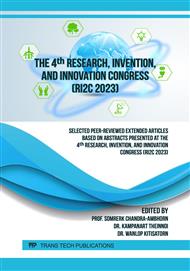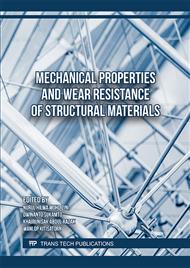p.35
p.41
p.47
p.55
p.63
p.71
p.79
p.89
p.95
Tensile Effect on Sensitization and Corrosion Resistance of Stainless Steels
Abstract:
The purpose of this research is to investigate cold work effect on corrosion behavior of stainless steels of type AISI 304, AISI 316L and AISI 2101. The specimen were processed through cold work simulated by the tensile test at various percentages elongation and then tempered at 600°C for different time intervals. Two electrochemical techniques and hardness test were utilized in this investigation. The first technique was the double loop electrochemical potentiokinetic reactivation (DL-EPR) that yields the values of degrees of sensitization (DOS). The second one was the cyclic potentiodynamic polarization (CPP) to study the ability of the metals to build or repair the damaged films under localized corrosion. The DOS values from the DL-EPR tests of the samples under the same heating conditions suggested that specimens drawn at higher percentage elongation tend to have more chromium depleted areas. Also, the test specimens with more exposure time to heat were more prone to chromium deficiencies. As for the ability of the metal to create or repair damaged film after corrosion has occurred, it was found that AISI 316L had hihger corrosion resistance than AISI 304. However, AISI 2101 stainless steel had highest corrosion resistance. In this study, it was also found that AISI 2101 did not exhibit pitting corrosion, but the crevice corrosion. This could be due the fact that AISI 2101 which is a duplex stainless steel has high corrosion resistance and could trigger the crevice corrosion take place before the pitting initiation.
Info:
Periodical:
Pages:
63-69
Citation:
Online since:
October 2023
Authors:
Price:
Сopyright:
© 2023 Trans Tech Publications Ltd. All Rights Reserved
Share:
Citation:



